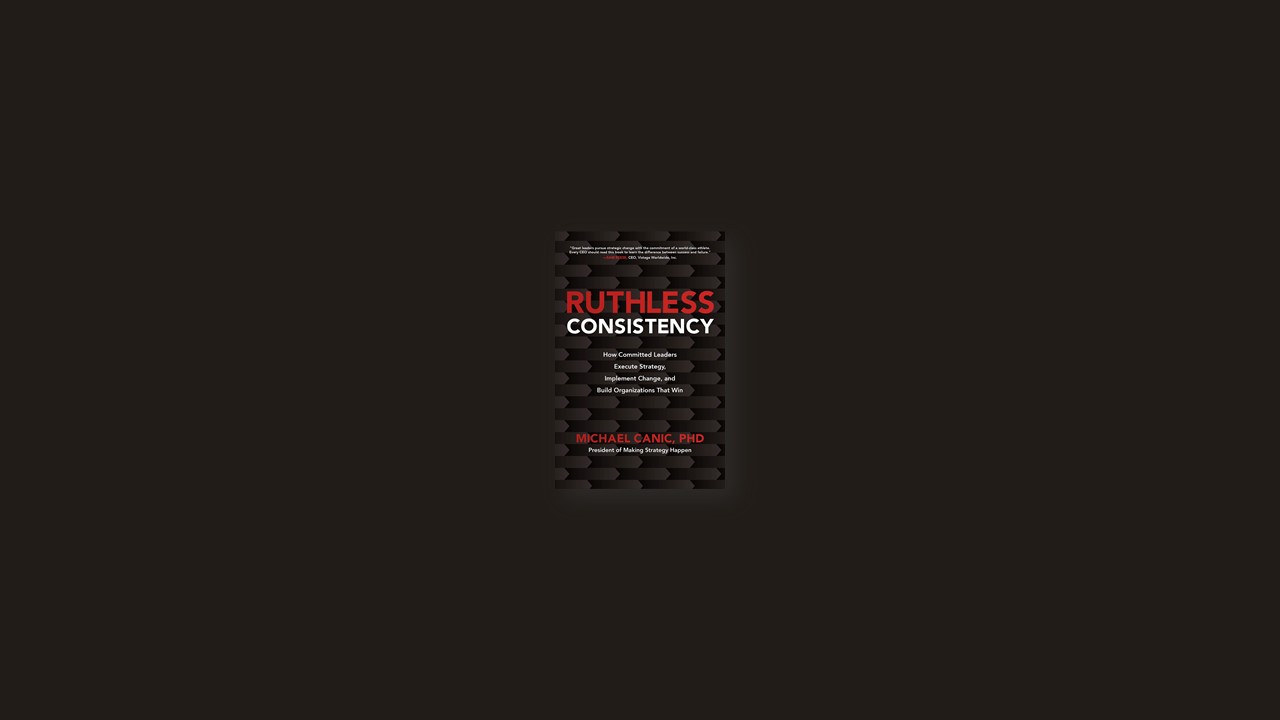Most strategic change initiatives (SCIs) fail, but why? It’s because leaders don’t have a complete picture of reality: what it takes to execute strategic change, their role in making it happen, and the level of commitment required.
If you’re fed up with failure, then first you need to understand the reality of why things fail.
First Principle: What Matters More Than Anything You Do Is Everything You Do
It’s the little details that are vital. Little things make big things happen. —John Wooden
No, there isn’t anything. Any one thing. It’s everything. Everything matters.
Companies that successfully implemented continuous quality improvement made sure everything was aligned with success. Every decision. Every action. All the arrows were pointed in the right direction. Consistently.
The successful companies regularly communicated the purpose of continuous quality improvement, why it was important, and how it applied to each individual. They provided the necessary skills, resources, and authority. They developed metrics and goals. They tracked and reported progress. They aligned management compensation. They celebrated successes. And they had the courage to hold people accountable. Again, all the arrows were consistently pointed in the right direction. These companies understood that “tell ’em and train ’em” simply wasn’t good enough. They knew that any critical factor misaligned could lead to failure.
And the companies that weren’t successful? Every case of failure could be traced to inconsistency. The unsuccessful companies formed quality improvement teams, but didn’t give people the authority to make changes. They set goals, but didn’t provide the resources to achieve them. They promoted quality, but as long as managers hit their financial targets, then quality didn’t matter. Inconsistency.
It was absolutely clear. The difference between success and failure was ruthless consistency.
It turns out that’s true not just for continuous quality improvement; it’s true for any strategic change initiative (SCI). Successful implementation requires more than just a pinch of training, a dash of resources, and a dollop of communications. It requires a systematic approach to aligning everything with the desired outcome. Everything matters. The whole truly is greater than the sum of its parts
Ruthless consistency is the key to implementing strategic change.
Saying that everything needs to be consistently aligned is one thing, but doing it is another. To be ruthlessly consistent you have to do three things: Develop the right focus. Create the right environment. Build the right team. Continually. That’s it. Every SCI always comes down to those three things.
Developing the right focus means identifying and articulating why your organization must change, what you intend to achieve, and how you intend to achieve it. Creating the right environment means aligning every organizational touchpoint, so that your team can and will execute on the right focus. Building the right team means securing the right collection of talent to make it happen.
Three things. But within those three things are a thousand opportunities to fail.
Second Principle: What You Do Is Not as Important as What Your People Experience
If you think you’re leading, but no one is following, then you’re only taking a walk. —John Maxwell
You think you’re being consistent. They think you’re sending mixed messages.
Take the case of a national sales director in the telecom industry. Her boss approached her with a project he called a “triple-A1” priority. It had to get done, and it had to get done now. What could be clearer than that? Not so fast. It turns out that every request he made was a triple-A1 priority. Everything had to get done now.
Her reaction?
“It was never clear what was or wasn’t a top priority. It was frustrating. Basically, I just worked on what I thought was most important. Some of those triple-A1 priorities didn’t get done. But I don’t know if he noticed or cared, or if it even made a difference.”
When you say everything is a top priority, what people hear is nothing is a top priority. You’re sending a mixed message. So what did the national sales director think about her boss?
“I don’t think he knew what he was doing. And that wasn’t just my view. People stopped taking him seriously. His triple-A1 priorities became a running joke in our company.”
Once you’ve killed your credibility you’re in big trouble because they stop listening to you—and even if they listen, they don’t believe what you’re saying is real. Why should they get on board with the new SCI when they don’t believe that you’re on board, that you’ll follow through? Is it any wonder that many employees’ reaction to management’s latest, greatest SCI is, “Let’s batten down the hatches until this blows over”?
What’s especially tragic is that mixed messages massively deflate your top performers, the ones most driven to succeed, the ones who desperately want a strong, focused, and consistent leader. When you fail to live up to that, you puncture their spirit.
Make no mistake. You are constantly on stage. Your employees are watching and judging your every move. They read meaning into everything you say and everything you do. Every decision, every action, every gesture, every expression, every word . . . everything. They also read meaning into everything you don’t say and don’t do—like when you don’t recognize someone who puts in extra effort or when you don’t provide them with the resources to get the job done.
When your words and actions are in conflict, which do you think they believe? Right. Your actions. That’s why it’s critical you consistently role model the values and behaviors you want them to model. If you want people to act with respect, then always be respectful. If you want a culture in which people reliably meet commitments, then be impeccable in meeting your commitments. Effective leaders know that role modeling is more powerful than telling.
Third Principle: You’re Not as Committed as You Need to Be . . . Yet
You don’t get 100 percent results with only 50 percent commitment. —Anonymous
Think of a failed SCI you’ve experienced. Now, write down all the reasons why it failed.
Now, be brutally honest. Were you as committed as you needed to be to successfully execute that SCI?
Did you set specific goals? Did you regularly communicate them throughout your organization? Did you communicate why you needed to achieve them and how you intended to achieve them? Did you cascade the goals down the org chart? Translate them into individual expectations?
Were you committed enough to deal with the inevitable, ongoing, and myriad work pressures, aside from the SCI, without caving on your commitment?
Now, with all of this in mind, how committed were you to winning?
Commitment is best summed up by a famous football coach say many years ago: “There’s a big difference between the will to win and the will to do what it takes to win.” Exactly. And you’d better understand that difference. Many of us have the will to win. We love the feeling of winning. We want to be associated with winners. But do we have the will to do what it takes to win?
Commitment. It’s not about holding motivational launch meetings, making big sweeping gestures, or pushing people through training. Pull back the curtain on any successful SCI and you’ll see a commitment that’s reflected in all the arrows pointed continuously in the right direction. You’ll see ruthless consistency.
You can’t be kind of, sort of, somewhat committed. If you are, you’ll fail. It takes intense commitment. The journey won’t be easy. Doing what it takes to win involves sacrifice. Often, you’ll feel uncomfortable. That’s how it’s supposed to feel.
How committed are you to winning? Your move.


